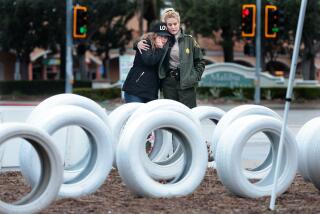San Diego officials join the move for a study on suicide-prevention barriers on Coronado Bridge

- Share via
Since the San Diego-Coronado Bridge opened in 1969, the landmark two-mile span has been the site of more than 360 suicides. And the numbers have surged over the last four years.
Now, San Diego officials are moving forward with a study to determine whether suicide barriers or nets could be installed to catch jumpers on their way down.
The study would determine whether the state Department of Transportation could install nets similar to those that San Francisco plans to add to the Golden Gate Bridge to prevent suicides.
The Coronado City Council recently made a similar endorsement, and the nonprofit Coronado Bridge Collaborative has launched an online campaign to raise the roughly $25,000 it estimates the study would cost.
“This request will go a long way to informing the state Department of Transportation of our two cities’ interest in addressing this particular issue,” San Diego Councilman Todd Gloria said Tuesday.
Gloria said he believes something similar to San Francisco’s plan, which cost $76 million, might make sense in San Diego.
“This has real impacts on people’s and family’s lives,” he said.
San Diego officials said Toronto and Washington have seen a sharp decline in bridge suicides after installing barriers.
Studies show that most people who attempt suicide don’t make a subsequent attempt if they are unsuccessful.
Rhonda Haiston, founder of the Coronado Bridge Collaborative, said she plans to hire an independent engineering firm to study potential barriers or nets, and then to present those findings to the state Department of Transportation for review and analysis.
Gloria suggested that he and his colleagues make contributions so the study can be completed by next summer.
Garrick writes for the San Diego Union-Tribune.
More to Read
Sign up for Essential California
The most important California stories and recommendations in your inbox every morning.
You may occasionally receive promotional content from the Los Angeles Times.










